America’s Gilded Age produced fortunes that would make modern billionaires blush—and the mansions built with that wealth still stand as monuments to ambition, excess, and impeccable taste.
These architectural treasures weren’t just homes; they were statements of power carved in marble, wrapped in silk, and topped with gold. Step inside the private worlds of America’s most notorious magnates and heiresses, where every chandelier has a story and every ballroom hosted history.
1. The Biltmore Estate

George Vanderbilt didn’t just build a country home—he created America’s largest private residence with 250 rooms sprawling across 175,000 square feet.
Completed in 1895, this French Renaissance château required an entire village of craftsmen and a personal railroad line just to deliver materials. Even today, visitors gawk at the indoor swimming pool, bowling alley, and 10,000-volume library where America’s railroad fortune was casually displayed as “light reading.”
2. Hearst Castle

Newspaper tycoon William Randolph Hearst demanded nothing less than his own hilltop kingdom overlooking the Pacific. Architect Julia Morgan spent 28 years fulfilling his ever-changing vision, creating a 165-room Mediterranean Revival fever dream.
Hearst casually decorated with actual European castle parts, Egyptian antiquities, and Renaissance ceilings he had shipped piece by piece. The Neptune Pool alone contains enough marble to build a small courthouse, making modern celebrity homes look positively restrained.
3. The Breakers

Cornelius Vanderbilt II commissioned this 70-room summer “cottage” that makes most royal palaces look like guest houses. Completed in 1895, this Italian Renaissance masterpiece required 2,500 workers and enough European marble to sink a small fleet.
The Great Hall rises 50 feet with nothing but gilded everything, because subtlety wasn’t in the Gilded Age vocabulary. When your ceiling costs more than most people’s entire neighborhoods, you’ve officially reached peak Newport—a flex that still draws gasps from visitors to this day.
4. Vizcaya
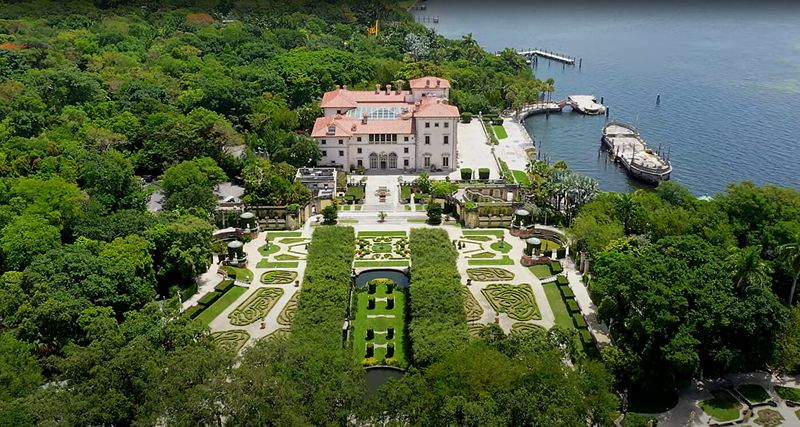
International Harvester magnate James Deering built his subtropical fantasy villa as Miami’s first true showstopper. Completed in 1916, Vizcaya blends Italian Renaissance grandeur with native limestone and tropical gardens in a way that screams “new money with excellent taste.”
The 34-room mansion sits like a jewel box on Biscayne Bay, surrounded by formal gardens that would make European royalty jealous. Deering’s imported 16th-century furniture and tapestries now share space with selfie-taking tourists who can’t believe someone actually lived here.
5. Monticello
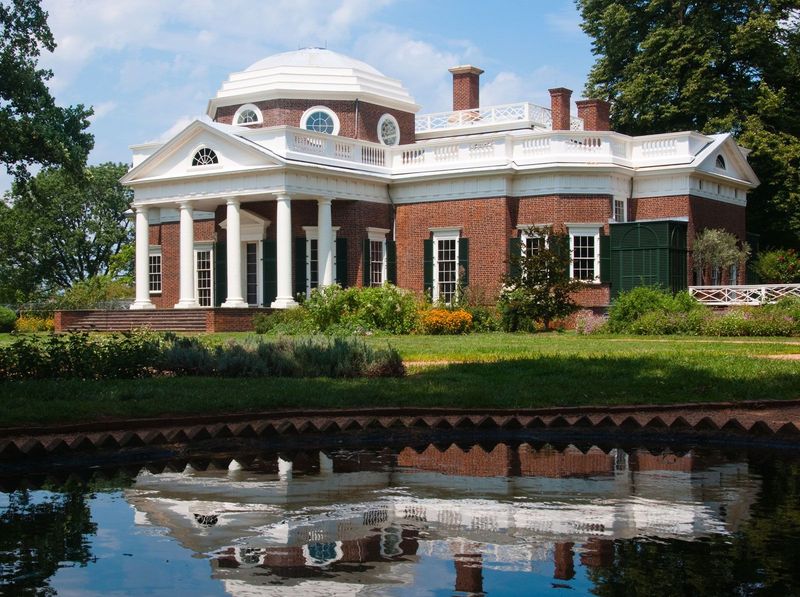
Thomas Jefferson didn’t just write the Declaration of Independence—he designed perhaps America’s most intellectually ambitious home. This neoclassical masterpiece took 40 years of obsessive tinkering, reflecting Jefferson’s brilliant, restless mind and European tastes.
The domed ceiling, hidden beds, and ingenious gadgets showcase America’s founding tech bro at work. Jefferson’s architectural flexing came at a terrible human cost, built and maintained by enslaved people—a contradiction that haunts this UNESCO World Heritage site where America’s ideals and failures stand in permanent tension.
6. Marble House

Alva Vanderbilt demanded this $11 million marble monument (that’s $300+ million today) as her “cottage” and divorce leverage from husband William K. Vanderbilt. Completed in 1892, this Beaux-Arts palace contains 500,000 cubic feet of marble—enough to build a small Italian village.
The Gold Room drips with more gilt than Versailles, because Alva wasn’t just keeping up with the Astors—she was crushing them. After securing her divorce, she used this limestone power play to host suffragist rallies, proving great homes sometimes finance even greater ambitions.
7. Fallingwater

Department store magnate Edgar Kaufmann Sr. commissioned Frank Lloyd Wright to create not just a house, but architectural poetry over a waterfall. Completed in 1939, this modernist masterpiece cantilevers dramatically over Bear Run, looking like it grew organically from the rocks rather than being built upon them.
Wright’s genius turned a weekend retreat into America’s most famous private residence. The Kaufmanns entertained Pittsburgh’s elite here, casually showing off their living room waterfall—still the ultimate one-upmanship in residential water features that makes modern infinity pools look desperately unimaginative.
8. Oheka Castle
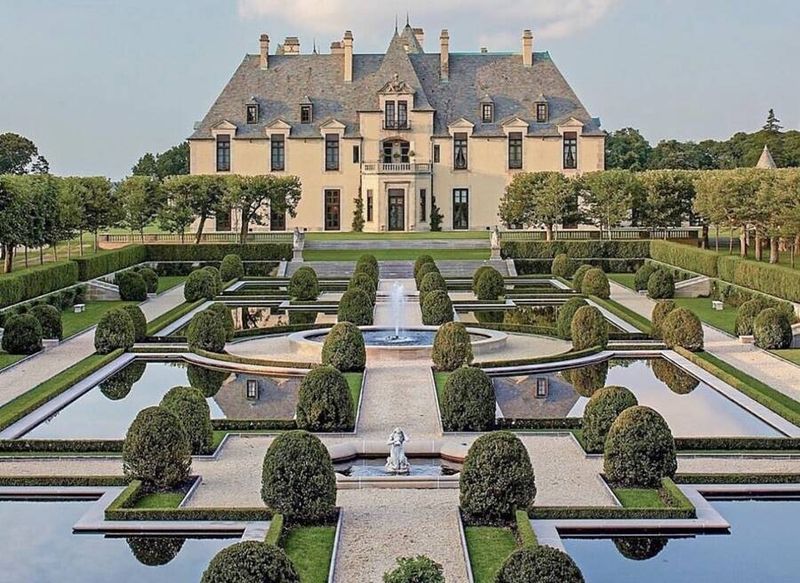
Financier Otto Hermann Kahn built America’s second-largest private home as his Long Island playground, complete with 127 rooms and 443 acres. This French-inspired château, completed in 1919, cost $11 million ($158 million today) because when you’re filthy rich during the Jazz Age, restraint is for the middle class.
The formal gardens were designed by the Olmsted Brothers, because when you’ve crushed it on Wall Street, only America’s premier landscape architects will do. Today it’s a luxury hotel where modern guests can pretend they’re Gatsby-adjacent while sipping cocktails where Kahn once entertained royalty.
9. San Simeon

William Randolph Hearst’s hilltop sanctuary makes most billionaire compounds look like starter homes. “La Cuesta Encantada” (The Enchanted Hill) features 165 rooms spread across 90,000 square feet of Mediterranean Revival extravagance—because why have one perfect room when you can have hundreds
Hearst filled his kingdom with actual medieval choir stalls, Roman mosaics, and Renaissance paintings. The Neptune and Roman pools contain enough marble to build a Greek temple, while the private zoo once housed exotic animals. Even the zebras still roam the grounds, a surreal reminder of when newspaper profits could buy absolutely anything.
10. Lyndhurst
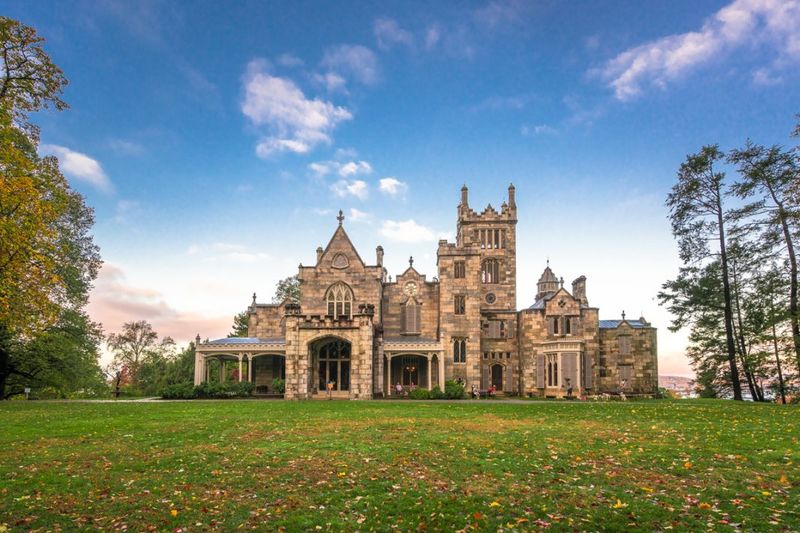
Railroad tycoon Jay Gould acquired this Gothic Revival castle as his Hudson River retreat, perfect for a man whose business tactics were equally medieval. The asymmetrical turreted mansion looks like it was transplanted from a European fairy tale, complete with pointed arches and flying buttresses.
Gould, one of America’s most hated robber barons, created a fortress of solitude where his family could escape public scorn while enjoying their controversial fortune with sweeping river views.
11. Rosecliff
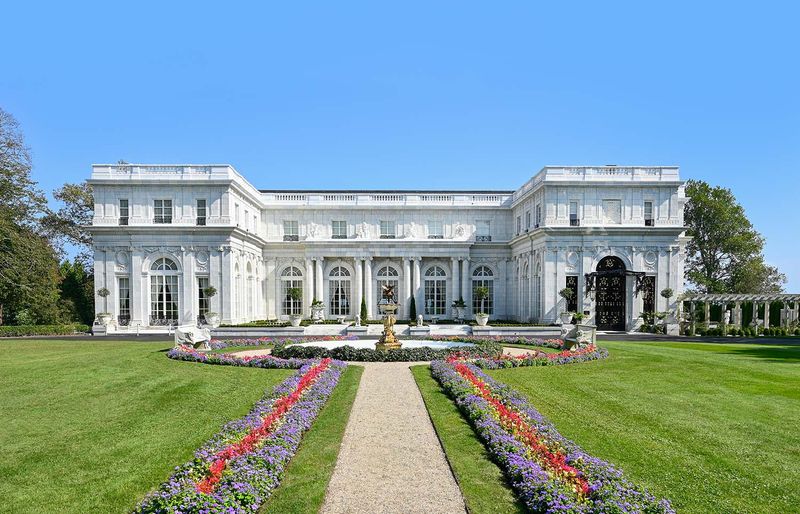
Theresa Fair Oelrichs, a silver mining heiress, commissioned this gleaming white Versailles-inspired palace for the sole purpose of throwing Newport’s most legendary parties. Completed in 1902, the $2.5 million “cottage” featured the largest ballroom in Newport, where Mrs. Oelrichs hosted her famous Fairy Tale Ball.
The heart-shaped staircase and ocean views provided the perfect backdrop for debutantes and marriage-minded mothers. Hollywood later discovered its photogenic charm—scenes from The Great Gatsby and 27 Dresses were filmed here, where Gilded Age excess meets modern wedding fantasy.
12. Shangri La
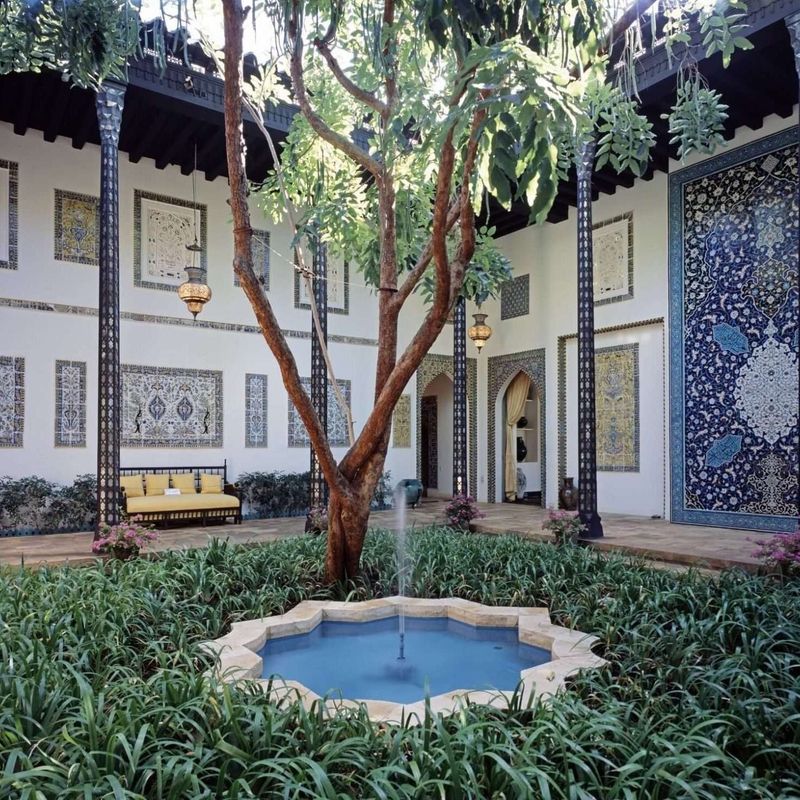
Tobacco heiress Doris Duke built her oceanfront Islamic-inspired paradise far from East Coast society’s judgmental gaze. Completed in 1938, this modernist-meets-Mughal masterpiece showcases her passion for Islamic art with intricate tile work, carved marble doorways, and courtyards that would make a sultan jealous.
Duke filled the 14,000-square-foot waterfront compound with treasures from her travels throughout the Middle East and South Asia. While other heiresses collected husbands and jewelry, Duke collected entire rooms from Syrian palaces and 13th-century Persian tiles—creating Hawaii’s most sophisticated cultural statement disguised as a private residence.
13. Filoli

Mining magnate William Bourn II created this Georgian country estate as California’s answer to English aristocratic living. Completed in 1917, the 54,000-square-foot mansion and its 16 acres of formal gardens became the West Coast’s definition of old money elegance.
The name “Filoli” comes from Bourn’s credo: “Fight for a just cause; Love your fellow man; Live a good life.” Later owned by the Roth family of Matson Navigation fame, the estate gained modern recognition as the Carrington mansion in the 1980s TV series “Dynasty”—proving that even fictional oil barons recognized prime real estate.
14. Winterthur

Henry Francis du Pont transformed his family’s gunpowder fortune into America’s premier decorative arts museum disguised as a 175-room country estate. The mansion grew like architectural kudzu between 1839 and 1930, eventually spanning nearly 96,000 square feet filled with du Pont’s obsessive collection of American furniture and art.
The 1,000-acre grounds feature naturalistic gardens that bloom sequentially through seasons. Du Pont was so fanatical about historical accuracy that he designed entire rooms around specific antiques—the ultimate collector’s flex that makes modern design influencers look positively restrained.
15. Drayton Hall
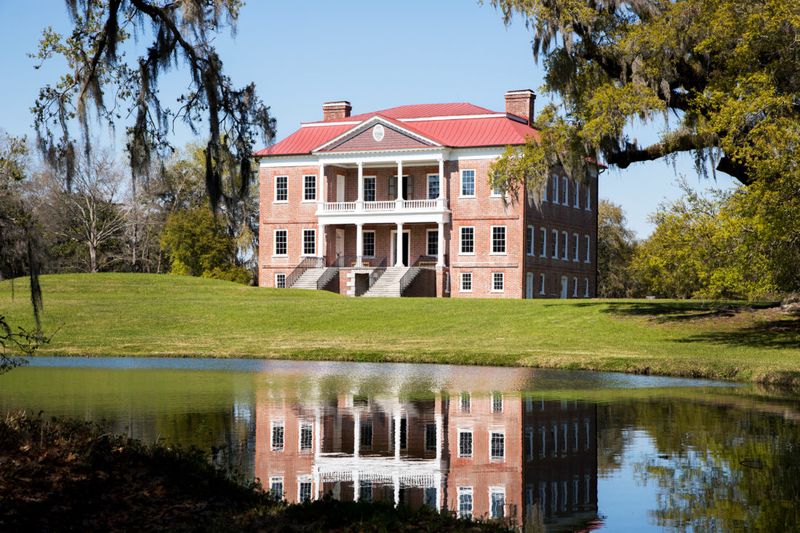
John Drayton commissioned this Palladian masterpiece in 1738 as the centerpiece of his indigo and rice plantation empire. The oldest unrestored plantation house in America stands as a study in Georgian-Palladian symmetry, miraculously surviving the Revolutionary War, Civil War, and countless hurricanes.
Seven generations of Draytons lived here, building wealth through enslaved labor while creating one of America’s architectural treasures. Unlike other historic homes, Drayton Hall remains deliberately unfurnished—its bare, elegant bones revealing construction techniques and allowing the architecture itself to tell stories that antiques might obscure.

